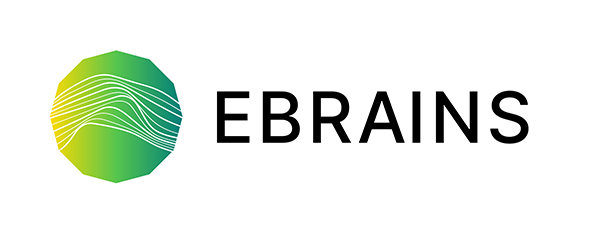IMB9345 – Neuroscience data integration through use of digital brain atlases
Course description
Schedule, syllabus and examination date
Course content
Understanding how the brain works is one of the grand challenges in science and requires the integration of huge amounts of heterogeneous and complex data. Numerous research publications present experimental data at various levels of granularity and describe a wide range of structural and functional aspects of the brain. The management of this deluge of data represents a bottleneck for progress, with a main challenge being that the multiple data categories are difficult to compare. In this context, reference atlases of the brain are important tools for assigning anatomical location and (semi-)automatically analysing data captured with the many methods and instruments used to study the brain. Reference atlases for the brain rank among the most frequently used and highest cited publications in neuroscience. But integration of data using conventional reference atlases has been difficult to achieve.
With a new generation of three-dimensional digital reference atlases, new solutions for integrating and disseminating brain data are being developed. In many ways, future digital reference atlases and the data systems built around them will be similar to current geographical atlases, such as Google Maps and Google Earth, which provide interactive access to huge amounts of high-resolution image data, together with additional information (annotations, practical information, photographs) and more detailed visualizations (e.g. "street view") for specific areas. Digital brain atlases are important resources for mapping, integrating, finding, and analysing neuroscience in context of anatomical location in the EBRAINS research infrastructure for neuroscience (https://www.ebrains.eu/).
This course contains an introduction to currently available reference atlases for mouse and rat brain. It will demonstrate how the 3D brain templates for the reference atlases are acquired, how they are used as a basis for delineating the structures of the brain, how they can be enriched by other data modalities, and how they can be used as a basis for assigning location (coordinate based or semantic) to a wide range of structural and functional data collected from the brain. The course will also outline examples of data system employed to organize neuroscience data collections in the context of reference atlases as well as analytical workflows applied to the data, with opportunities for hands-on exploration of selected tools.
Read more about how digital brain atlases are used in the EBRAINS infrastructure at https://ebrains.eu/services/atlases


Learning outcome
This course will give you:
- Knowledge about:
- concepts for integration of research data
- organization and management of heterogeneous neuroscience research data
- reference atlases for the brain
- workflows for analysis of neuroscience image data
- Skills to:
- explain and use quantitative methods for assigning location to data from the brain
- critically evaluate information in research publications on localization of data acquired from the brain
- apply methods for anchoring / spatial registration of neuroscience research data to reference atlases
- understand the principles of constructing and implementing analytical workflows for neuroscience data that have been anchored to reference atlases
- General competence to:
- understand the possibilities and limitations of current digital brain atlasing resources
- gain insight into cross-disciplinary approaches to spatial integration and sharing / re-use of experimental brain research data
Students will gain updated knowledge about current approaches to assigning anatomical location to experimental data from the brain, and integration of different categories of data by use of a common spatial reference framework. They will acquire basic skills necessary for finding appropriate atlasing resources and associated Tools.
Admission
- The course is open for up to 40 participants.
- Register to the course using the following form: https://nettskjema.no/a/345399
- PhD candidates admitted to a PhD programme at UiO who wish to obtain 2 study credits can sign up via StudentWeb
- Applicants not admitted to a PhD programme at UiO who wish to obtain 2 study credits must apply for a right to study using this form: https://nettskjema.uio.no/answer/79776.html
Prerequisites
Recommended previous knowledge
Candidates should be involved in planned or started research project in neuroscience, medicine, or biology that involve analysis of data captured from the brain. Basic knowledge in neuroscience and brain anatomy corresponding to part one of the "Central Nervous System" by Per Brodal (Oxford University Press, 2016) or comparable sections in other neuroscience textbooks. Students are recommended to read the collection of articles before the course defined in Curriculum, see below.
Teaching
The teaching will be organized as a two day intensive course with examination in the form of a short essay writing assignment on a topic related to the lecture notes and given literature. The lectures will be given by leading researchers from Norway and/or abroad and there will be group discussions based on the topics of the course. You have to participate in all parts of the teaching to be allowed to take the exam. Attendance at lectures will be registered.
Curriculum:
Please read the compulsory preparation material and procedure descriptions indicated in the Curriculum list ahead of the course. A list of recommended preparation material is also given.
Examination
The exam will be in the form of a short essay writing assignment (~200-300) on a topic related to the lectures notes and given literature, to be completed within two days after the course. Estimated work time= 4 hours.
Use of sources and citation
You should familiarize yourself with the rules that apply to the use of sources and citations. If you violate the rules, you may be suspected of cheating/attempted cheating.
Grading scale
Grades are awarded on a pass/fail scale. Read more about the grading system.
Explanations and appeals
Resit an examination
Withdrawal from an examination
It is possible to take the exam up to 3 times. If you withdraw from the exam after the deadline or during the exam, this will be counted as an examination attempt.
Special examination arrangements
Application form, deadline and requirements for special examination arrangements.
Evaluation
The course is subject to continuous evaluation. At regular intervals we also ask students to participate in a more comprehensive evaluation.